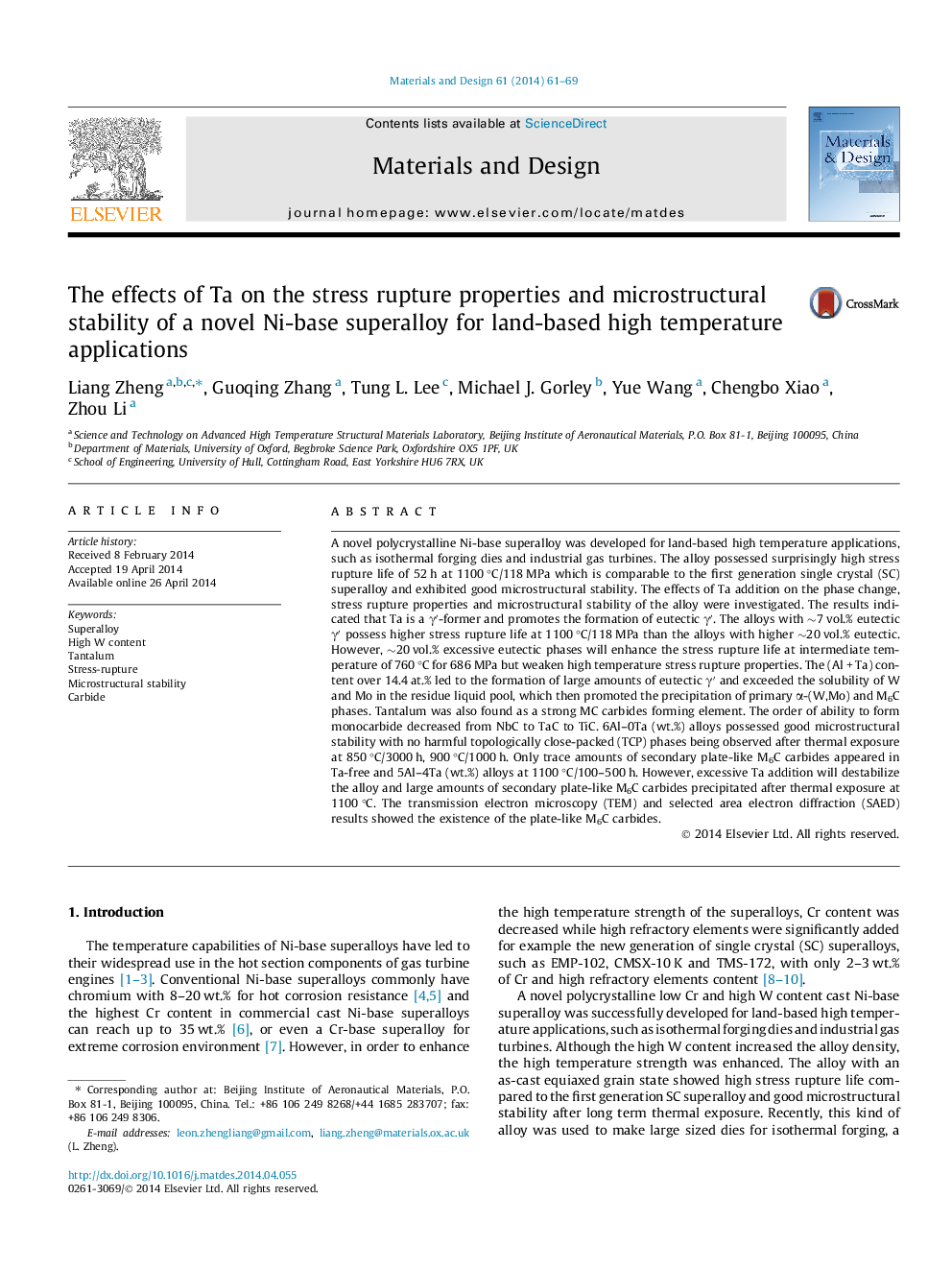| Article ID | Journal | Published Year | Pages | File Type |
|---|---|---|---|---|
| 829132 | Materials & Design (1980-2015) | 2014 | 9 Pages |
Abstract
A novel polycrystalline Ni-base superalloy was developed for land-based high temperature applications, such as isothermal forging dies and industrial gas turbines. The alloy possessed surprisingly high stress rupture life of 52 h at 1100 °C/118 MPa which is comparable to the first generation single crystal (SC) superalloy and exhibited good microstructural stability. The effects of Ta addition on the phase change, stress rupture properties and microstructural stability of the alloy were investigated. The results indicated that Ta is a γâ²-former and promotes the formation of eutectic γâ². The alloys with â¼7 vol.% eutectic γⲠpossess higher stress rupture life at 1100 °C/118 MPa than the alloys with higher â¼20 vol.% eutectic. However, â¼20 vol.% excessive eutectic phases will enhance the stress rupture life at intermediate temperature of 760 °C for 686 MPa but weaken high temperature stress rupture properties. The (Al + Ta) content over 14.4 at.% led to the formation of large amounts of eutectic γⲠand exceeded the solubility of W and Mo in the residue liquid pool, which then promoted the precipitation of primary α-(W,Mo) and M6C phases. Tantalum was also found as a strong MC carbides forming element. The order of ability to form monocarbide decreased from NbC to TaC to TiC. 6Al-0Ta (wt.%) alloys possessed good microstructural stability with no harmful topologically close-packed (TCP) phases being observed after thermal exposure at 850 °C/3000 h, 900 °C/1000 h. Only trace amounts of secondary plate-like M6C carbides appeared in Ta-free and 5Al-4Ta (wt.%) alloys at 1100 °C/100-500 h. However, excessive Ta addition will destabilize the alloy and large amounts of secondary plate-like M6C carbides precipitated after thermal exposure at 1100 °C. The transmission electron microscopy (TEM) and selected area electron diffraction (SAED) results showed the existence of the plate-like M6C carbides.
Related Topics
Physical Sciences and Engineering
Engineering
Engineering (General)
Authors
Liang Zheng, Guoqing Zhang, Tung L. Lee, Michael J. Gorley, Yue Wang, Chengbo Xiao, Zhou Li,
